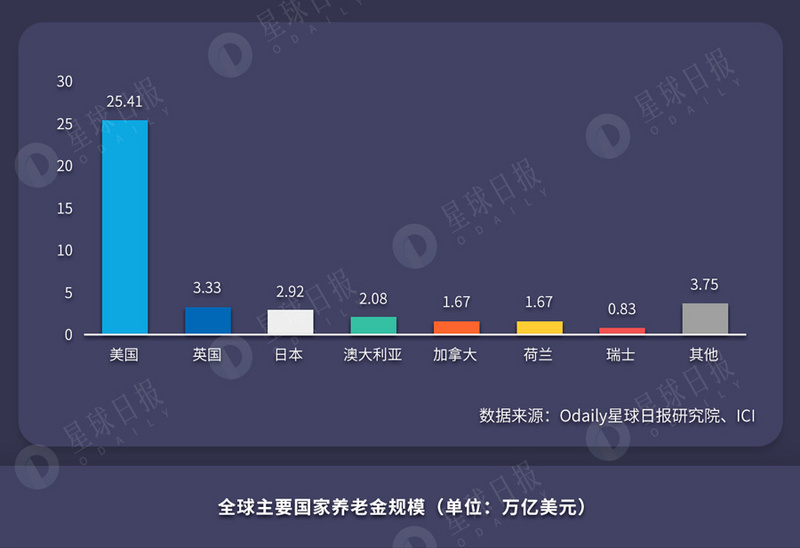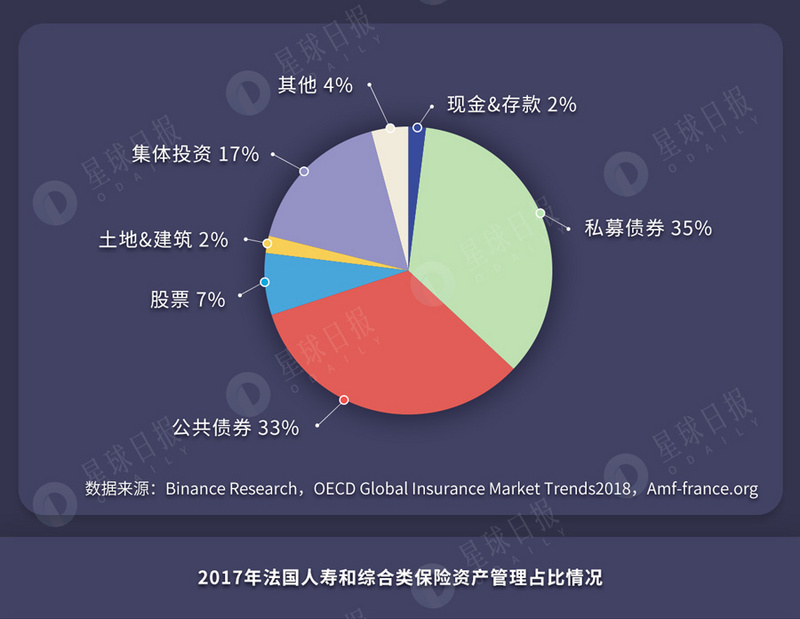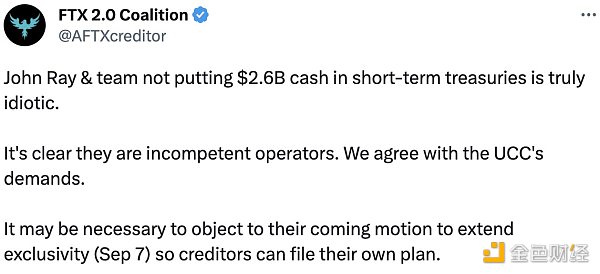In the next eight years, the new $8 trillion in the digital currency market may come from these five “golden owners”.
We are talking about a growth rate of nearly 50 times.
Digital currency has entered the bear market for nearly a year, and the callback in the past two months has brought positive sentiment to investors. The price recovery is affected by many factors: the new computing power in the preparation for the wet season, the SEC is joking through the April Fool's Day of the Bitcoin ETF, JPMorgan issued a stable currency, and Facebook is looking for a capital for its stable currency issuance plan. The Litecoin is about to cut production…
However, the thrust of these events is not strong enough. From the perspective of blockchain practitioners and digital currency investors, the most worthwhile expectation is that huge amounts of money will enter the market.
In the long run, the advancement of regulatory technology and the improvement of infrastructure will be promoted. Institutional investors will further dilute the proportion of retail investors and catalyze the maturity of the market due to the emotional entry of FOMO (Fear of Missing Out).
- Move out, shut down, "mineral capital" Sichuan is facing the strongest supervision
- Babbitt column | Personal information exit needs security assessment, the impact on the geometry of overseas currency companies?
- Depth | A review of the seven major blockchain privacy protocol mechanisms
So when the market is mature, how big is the plate? Which channels will the funds come in from?
Many celebrities and institutions are trying to make predictions. For example, in 2018, Buffett, Bill Gates, and Ma Yun predicted the death of Bitcoin. For example, in July 2017, McAfee predicted on Twitter that “in the next three years, your bitcoin will rise to 500,000 US dollars. If not, I will broadcast it on national TV station [unable to describe].” His time is running out…) According to the World Economic Forum, by 2027, 10% of global GDP is expected to exist on the “chain”. If estimated by the World Bank's 2017 global GDP of 80.68 trillion US dollars, the 2027 cryptocurrency market will have at least 8 trillion US dollars . The Odaily Planet Daily Research Institute believes that this figure basically balances the "beautiful fantasy of the coin circle" and the "cruel reality" under supervision.
From the perspective of capital import, according to the category of traditional financial assets, pensions, endowments, ETFs, insurance funds, and high-net-worth people's disposable assets can easily break through the existing ceiling of digital currency and bring nearly 8 trillion to the market. Dollar. At the same time, we must also objectively and calmly realize that this figure is still based on the “ideal assumptions” , that is, the above assets exclude other investment temptations and choose digital currency as the target. Given the current high risk and semi-mature of digital currencies, there is little expectation of this possibility in the short term.
Let's take a look at the current market size and future growth of cryptocurrencies.

Calculated on cryptocurrency data of April 29, 2019,
- The total value of existing cryptocurrencies accounts for 2.35% of the global physical currency (0.17 vs 7.232, trillion US dollars);
- The cryptocurrency accounts for 0.19% of the value of all currencies in the world (0.17 vs 90.4 trillion);
- The global stock market is 453 times the cryptocurrency market (77 vs 0.17, trillions);
- The total value of mined gold is 85 times that of Bitcoin (7.9 vs 0.093, trillions);
- The company with the highest market value is more than 10 times the total value of Bitcoin (0.96 vs 0.093, trillion US dollars).
According to the 2ND GLOBAL CRYPTOASSET BENCHMARKING STUDY released by the Alternative Finance Center of the University of Cambridge, in the encryption market, there are only 35 million users who are willing to pass the real name verification of the exchange, and there are 7.7 billion people in the world, of which 4 billion are Internet users. % of the population), the encryption market users account for only 0.45% of the global population.
Below, we will introduce potential admission funds one by one.
Pension: 76.2 billion to 4.14 trillion US dollars
Pension funds do not favor investing in cryptocurrencies. The reason is simple. Pension funds are known for their stability, while cryptocurrencies have both policy and volatility risks.
However, since February 2019, the situation has changed. Two $5.1 billion pension funds in Fairfax County, Virginia, USA, funded a venture capital fund with a management portfolio of $40 million focused on the blockchain and digital asset industries.
According to the Investment Company Institute (ICI), by the end of 2017, the total assets of pension funds in 22 major countries around the world were approximately $41.4 trillion. Pension funds in many countries treat cryptocurrencies as an Alternative Investment Strategy. According to the statement of the Fairfax retirement system, in the asset allocation of the police pension plan, the cryptocurrency ratio is 0.8%, and the cryptocurrency ratio in the employee pension plan is 0.3%.

We refer to Fairfax's statement that if the pensions in the 22 major countries are all equipped with 0.3% cryptocurrency, there will be $124.2 billion in admission; if the allocation ratio reaches 1%, the admission amount will reach $114 billion; If the configuration ratio reaches 5%, the admission amount will reach 2.07 trillion US dollars; if the configuration ratio is 10%, the admission amount will reach 4.14 trillion US dollars.
Looking at the US market alone, by the end of 2017, the total size of US pension assets had reached 25.41 trillion US dollars. If the cryptocurrency is favored by US pensions, the entry amount will be US$76.2 billion, US$254.1 billion, US$1.27 trillion, and US$2.54 trillion, respectively, according to the allocation ratio of 0.3%, 1%, 5%, and 10%.
Endowment Fund: 3.413 billion to 34.128 billion US dollars
According to a survey conducted by Global Custodian and The TRADE, 94% of the 150 endowments in the past year have invested in encryption projects.
Endowment funds have the potential to become one of the important institutional investors in the encryption market. In the United States, university endowment funds are highly developed, and private and public universities have generally established their own endowment funds. By the end of 2017, there were more than 800 university endowment funds in the United States, and the total assets reached nearly $566.8 billion. The assets of the Yale University Endowment Fund and the Harvard University Endowment Fund are $27.2 billion and $37.1 billion, respectively.
According to a survey of 812 college investment institutions in the United States by the National Association of College & Business Office, as of June 2016, the proportion of US investment funds in alternative investments, stocks, and cash/receipt was 52%, 35%, and 13%. Among the top university donors (including 11 universities including Harvard, Yale, Princeton, and Columbia), the allocation of alternative assets is as high as 60%, much higher than stocks (27%) and cash/fixed income (13%). We allocate cryptocurrency definitions to 1%, 5%, and 10% of alternative assets, and believe that university endowments will bring $3.413 billion, $170.64 billion, and $34.128 billion to the encryption market.
ETF: 84 billion to 336 billion US dollars
An ETF is an open-ended index fund that is traded on exchanges and has a variable fund share. It is often referred to as Exchange Traded Funds.
In July 2013, the world's first bitcoin ETF that was publicly filed with the US Securities and Exchange Commission (SEC) was proposed by the brothers Winklevoss. However, the SEC refused because the proposal failed to prove its “prevention of fraud and manipulation” and “protecting investors and the public interest”. In the next five weeks, the SEC rejected 15 applications for Bitcoin ETFs.
The reason why the Bitcoin ETF is closely watched by the market is that OTC funds can meet the growing demand of institutional investors through the ETF access channel, which in turn pushes up the bitcoin price. In addition, more importantly, approval means that Bitcoin and the entire encryption industry are recognized as new legal asset classes. According to Michael Strutto, CEO of technology think tank IronWood, if the Bitcoin ETF is approved, it will bring in $84 billion to $336 billion in new funding for the encryption market.
Insurance funds: 1.08 billion to 10.86 billion US dollars
On April 11, 2019, the French parliament voted to pass the “Loi Pacte” bill, which indirectly allowed French insurance funds to invest in encrypted digital currency. According to the OECD (Organization for Economic Co-operation and Development), the scale of French life insurance and comprehensive insurance assets management reached 2.3 trillion euros in 2017, including “collective investment (CIS)” and “other assets”. (Others) accounted for 21.4% of the total, and the earliest insurance cryptocurrency investment may appear in these two categories (private fund or open market ETF).

Assuming that “other assets” are allocated to the cryptocurrency market at 1%, 5%, and 10% of the assets, an inflow of 1.08 billion, 5.43 billion, and 10.86 billion dollars can be expected.
High net worth crowdable assets: $3 trillion
In the 2018 World Wealth Report released by Capgemini, Capgemini noted that the interest of cryptocurrency by high net worth individuals has grown significantly. According to the report, 29% of respondents expressed high interest and 27% expressed general interest, with high-net-worth clients in South America and Asia investing in cryptocurrencies at 59.7% and 51.6%, respectively.
At present, the global high-net-worth population has reached 70 trillion US dollars. According to the traditional large-scale asset allocation concept, high-net-worth individuals generally allocate 5% to 10% of total wealth to alternative assets. This value reached 9.4% in 2018. We assume that future cryptocurrency investments account for 45% of alternative asset investments, and then more than $3 trillion of wealth will flow into the cryptocurrency market.
In addition, the economic environment of some countries and regions can bring more funds and users to the cryptocurrency market.
For example, in 2018, Venezuela suffered inflation and economic crisis, and citizens sought safe haven for cryptocurrency, and cryptocurrency trading volume soared.
On May 9, the same year, Mohammad Reza Pourebrahimi, chairman of the Economic Committee of the Iranian Parliament, revealed that Iran had shed 2.5 billion dollars to purchase cryptocurrency. He believes that in addition to helping to promote economic transactions, cryptocurrencies can also evade US sanctions.
According to Japanese media reports, on May 3, 2018, the margin ratio of Japanese foreign exchange margin trading will be reduced from a maximum of 25 times to a maximum of 10 times. Due to this new regulation, a large amount of capital may flow into the cryptocurrency market.
Author | Li Xueting
Source | Planet Daily
Original articles, violations of laws and regulations must be investigated.
We will continue to update Blocking; if you have any questions or suggestions, please contact us!
Was this article helpful?
93 out of 132 found this helpful
Related articles
- $150 million is not given in white, Block.one considers charging "inflation tax" on Voice.
- Grayscale Reporting: Bitcoin is a tool for hedging financial crises, with various features superior to gold
- Staking Economy: A new business model that is like a broken bamboo
- Heavy! Facebook has signed a cryptocurrency project cooperation agreement with more than 10 companies including Visa and MasterCard.
- US Food and Drug Administration works with large companies such as IBM to optimize drug supply chains using blockchain
- Multi-party computing (MPC) analysis: a bold new vision for cryptocurrency protection
- Facebook currency road





